Potez 631
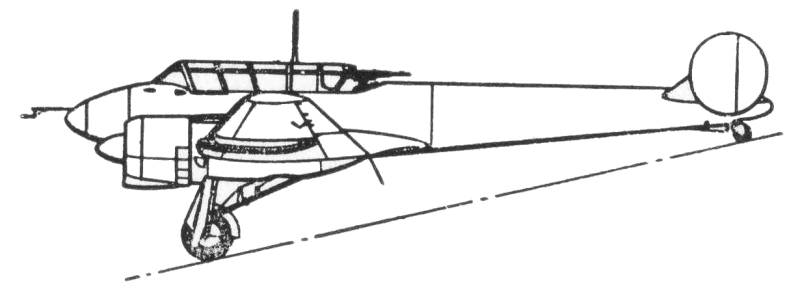
The
Potez 631 was the Gnome-Rhone 14M powered development of the
Potez 630,
a three seat fighter that was built to the requirements of a
specification issued in October of 1934. The prototype was
found to
possess excellent flying qualities. After rectifying a
number of minor
defects in longitudinal stability at low speeds and some
improvement of
the control balance the production of 80 630's was begun in
May of
1937, these being equipped with Hispano-Suiza 14AB 10/11
engines.
Simultaneously 140 631's were ordered these having the
Gnome-Rhone 14M
engines. The first production 630 was flown in February or
1938 and the
first deliveries to squadrons was made before the end of the
year. Due
to engine problems most units originally equipped with the
630's were
re-equipped with the 631's prior to May 1, 1939. At the time
of the
German onslaught in May, seven 631 equipped squadrons were
based in
northern France with an eighth based at Loyettes, near
Lyons. In combat
the performance of the 631 was found wanting and many were
used for
ground strafing operations. During the
Battle of France, the Potez 631s managed to shoot down 4 confirmed and
8 probables, for a loss of 10 to enemy action.
Two Aeronavale units, based at Calais-Marck, Escadrilles AC1 and AC2
of Flottille F1C, had the greatest success, shooting down 12 German
aircraft over the North Sea for a loss of 8 of their own. With
a similar appearance to the Bf-110, the Potez 631 suffered from its
similarity to the German twin, and three were shot down by their own
side, in addition to several others being shot up.
The Kit
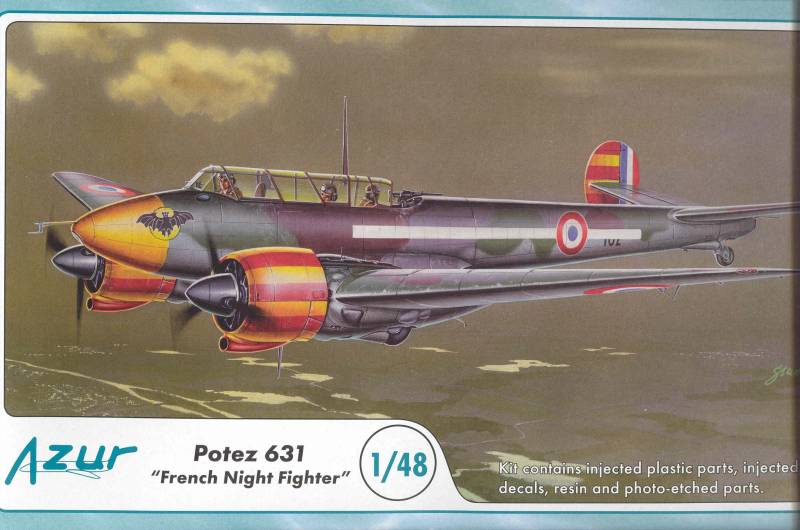
The Azur kit
comes in a two part top open box with a fairly thin top but
heavier
bottom section. This kit was designed in France and molded by
MPM.
Inside the box is one large bag containing all of the injection
molded
parts and two small bags, one with resin parts and the other
with the
clear parts. The kit is molded in a gray plastic and features
fine
recessed panel lines and raised detail where applicable. The
panel
lines are uniform and nicely done. The control surfaces are all
fixed
and the fabric detail is nicely done, read not over done as is
often
the case. The surface finish is semi-gloss and I only found one
surface
defect on the upper wing that almost looks like a paint run
which
shouldn't require more than a little sanding to fix.
The large parts are nearly flash free with only a light amount of flash on some of the smaller parts and some parting lines to clean up. The sprue attachment points are heavier than main stream kits so some care is required when removing parts from sprues. The wheel wells are closed in and feature a minimal amount of detail. Ejector pin marks and stubs have been placed where they won't show and it doesn't appear that any will require removal to facilitate assembly either which is always nice. The kit features a nice level of cockpit detail with molded structure and junction boxes on the fuselage side walls. The instrument panel features raised bezels with internal raised detail. There are seats for all positions, consoles extra ammo drums ans trim wheels. The pilots seat is very nicely done with a separate frame and seat cushion. The props are the multi part type and the wheels are not weighted. By my count there are 131 parts in gray. See below.
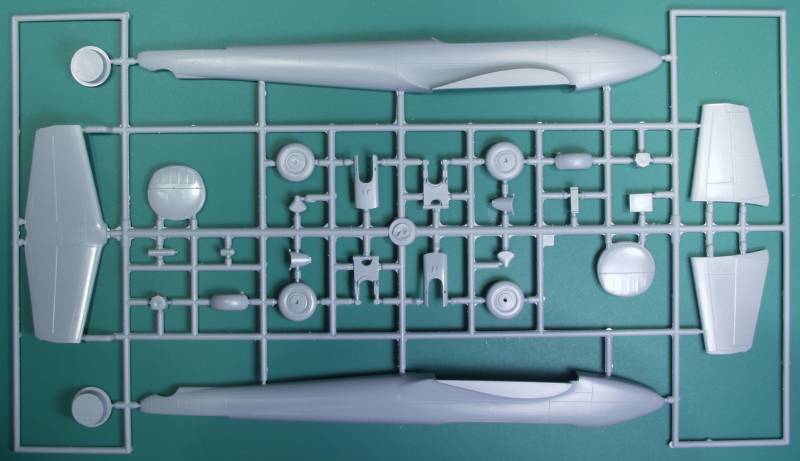
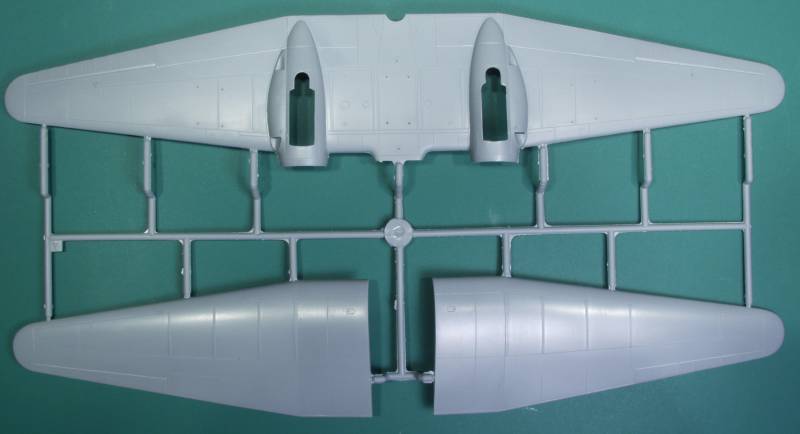
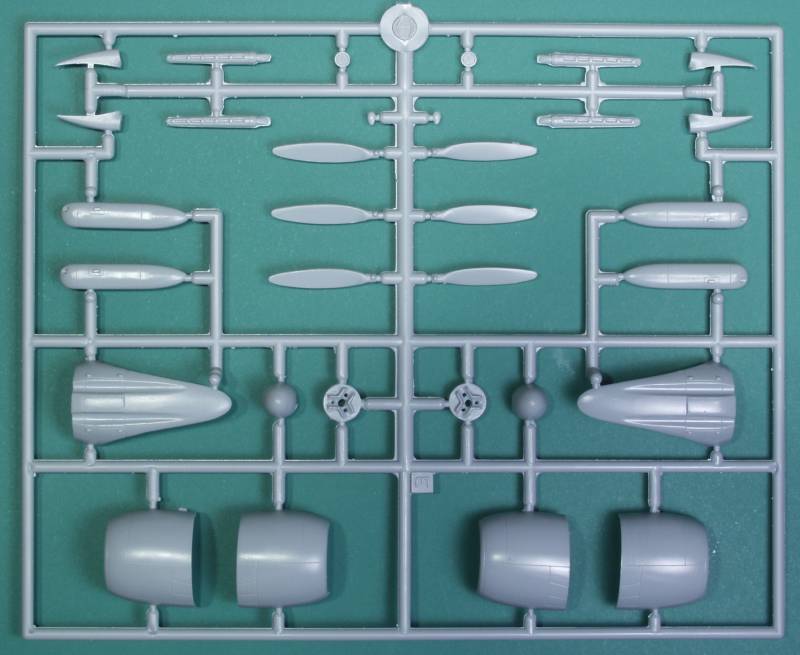
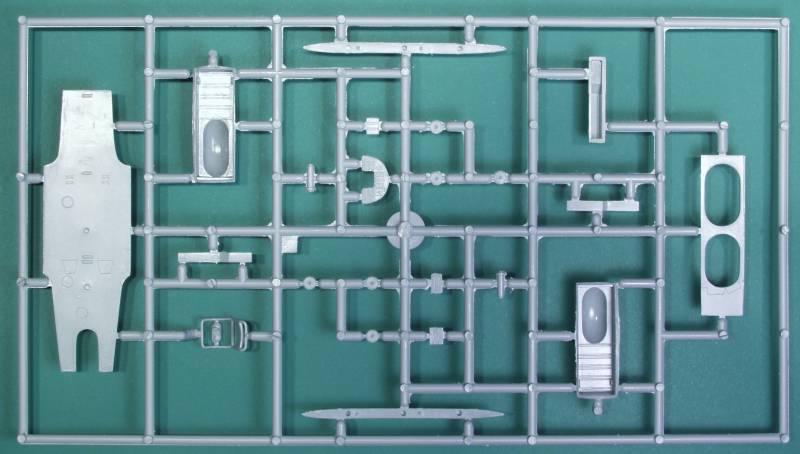
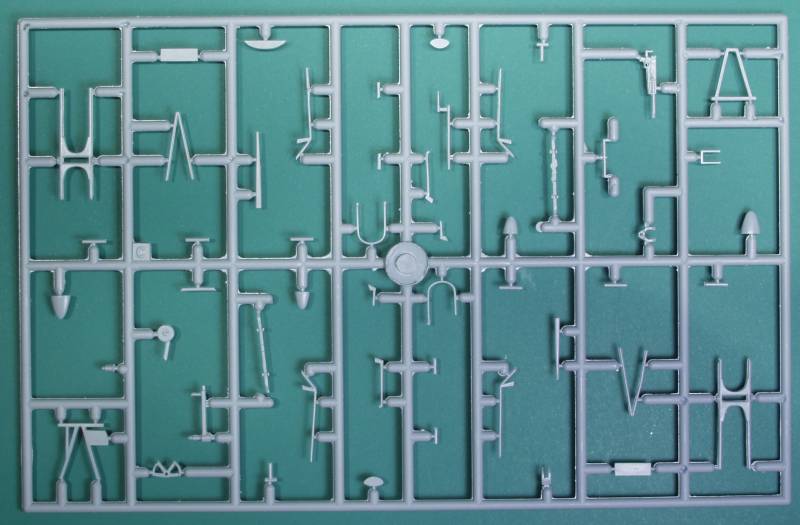
The resin parts are molded in a cream colored resin and include the engines, tail wheel strut and tail wheel and some small detail parts for the cockpit and landing gear assemblies. The parts are nicely molded with no visible pin holes or short shots. See below.
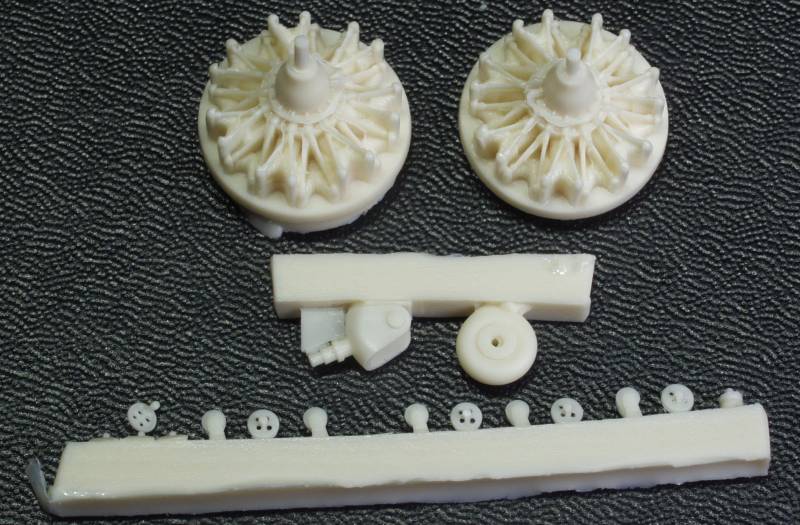
The kit includes a small fret of photoetch and a small film detail. Included are belts and harness for the cockpit, trim actuators, a gun sight and a couple of port surrounds that are used with the supplied film and a couple parts for the gear bays, see below.
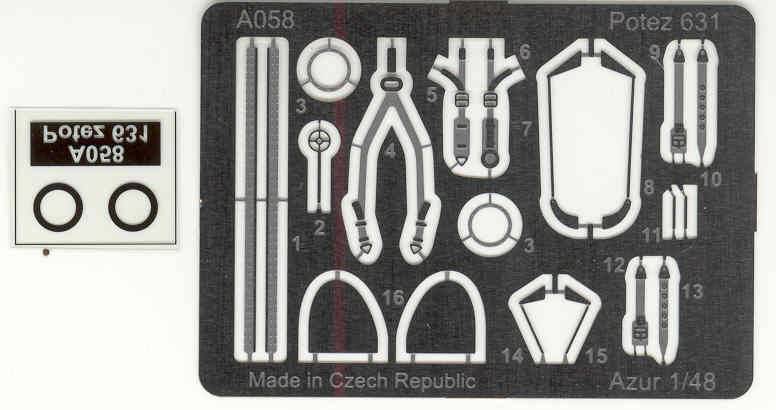
The clear parts are reasonably thin and clear. The canopy has nicely raised frame lines. The other two parts are a nose glazing for perhaps the landing light or gun camera and the other is a clear port for the under side. See below.
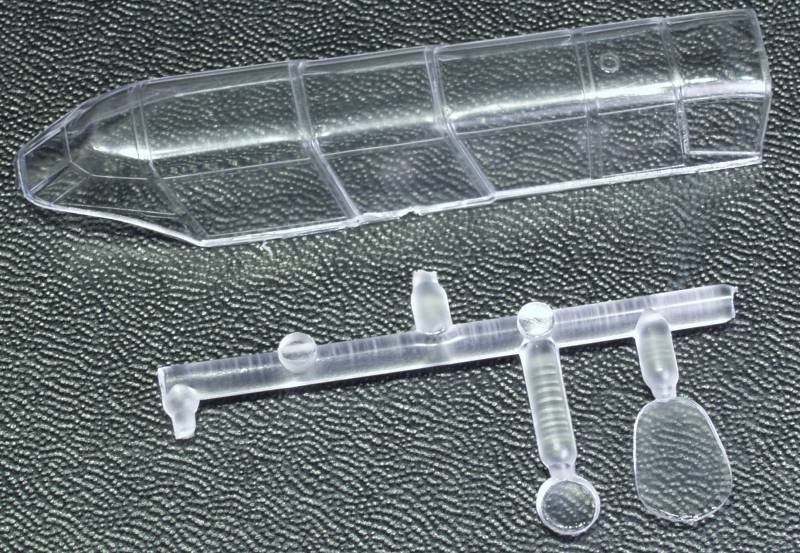
The decals are thin and in register and include markings for four aircraft. See below.
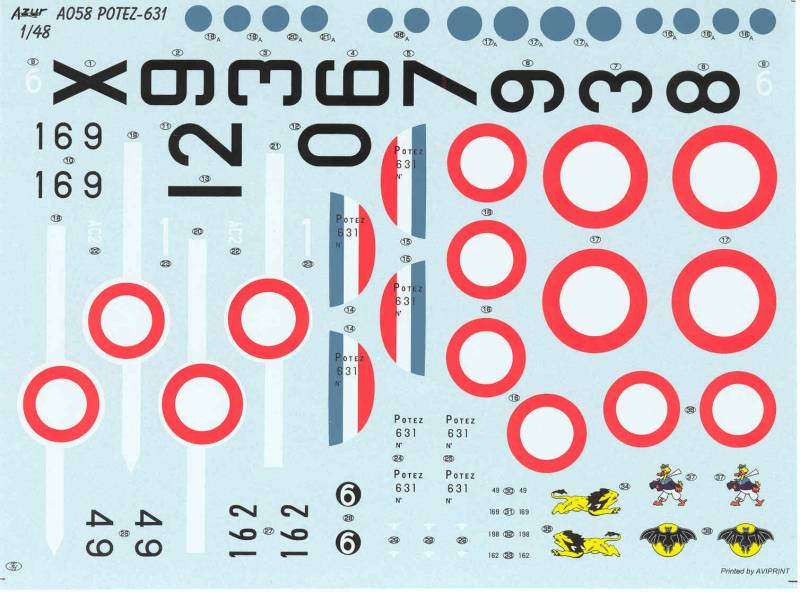
The instructions are printed on three A4 sized sheets folded in half to create twelve panels. The first panel has history and specifications in two languages, the second panel has a parts map, panels three through eight are assembly steps and panels nine through twelve have painting and marking instructions.
After Market Goodies
There are none that I am aware of for this kit.
Conclusions
This is a very nice kit for a limited run style kit as it seems to have been produced with higher standards than most other MPM manufactured kits, perhaps due to the French design influence. It is a model of a significant French aircraft and by all accounts fits well and should be doable by modelers with a moderate amount of experience. Recommended !
Links to kit build or reviews
A build / review can be found here and and additional inbox reviews found here and here.
References
War Planes of the Second World War, Fighters, Volume One by William Green
Back to the Misc British page